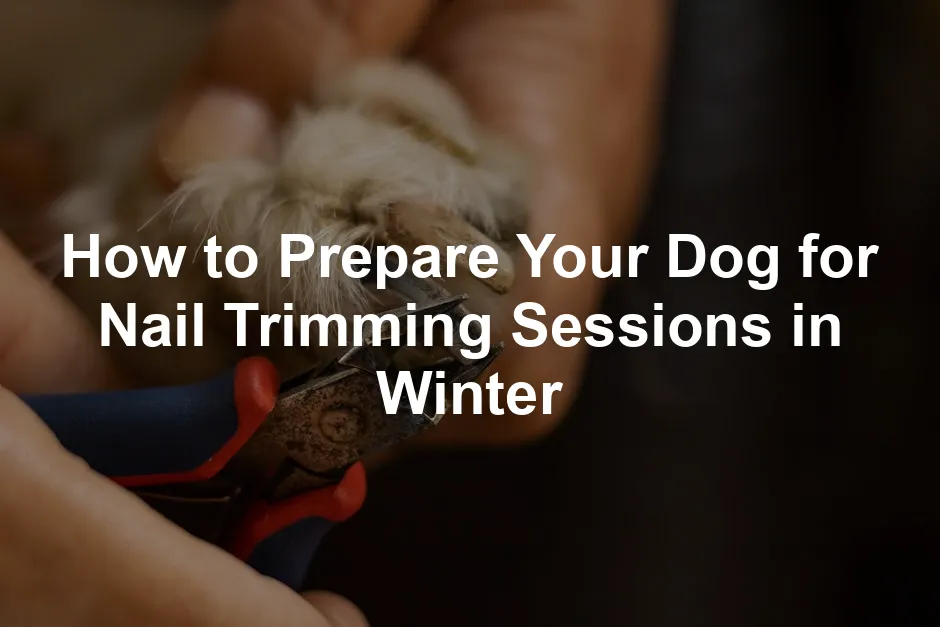Introduction
Nail trimming is vital for dogs during winter. Regular trims prevent discomfort and injuries. However, many pet owners struggle with this task in colder months. Dogs may become less active and their nails may grow more quickly. This article aims to share tips to prepare your dog for nail trimming sessions in winter. To make the job easier, consider investing in a reliable set of dog nail clippers. They can make all the difference!
Summary and Overview
Winter brings unique challenges for nail trimming. Dry air can lead to brittle nails, while indoor inactivity may slow down nail wear. Regular nail care is crucial for your dog’s comfort and mobility. Long nails can cause pain and lead to mobility issues. In this article, we will cover understanding your dog’s needs, building trust, handling techniques, and the right tools for nail trimming. A dog nail grinder is another great option for those who prefer a gentler approach!

Preparing Your Dog for Nail Trimming
Understanding Your Dog’s Needs
Winter affects your dog’s needs in several ways. Dogs often grow thicker fur, which can make nail checks more challenging. Additionally, reduced outdoor activity can lead to faster nail growth. Regularly checking your dog’s nails helps ensure they remain at a healthy length. Consider using a dog pheromone spray to help ease any anxiety when checking those nails!
Look for signs that indicate nails are too long. If you hear clicking sounds on hard floors, it’s time for a trim. Discomfort while walking can also signal that the nails need attention. Keeping up with nail trimming is essential for your dog’s overall health and comfort during winter.
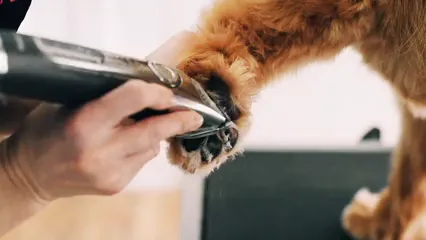
Building Trust and Positive Associations
Creating a positive environment around nail trimming is crucial. Start by handling your dog’s paws gently, rewarding them with treats. This helps build trust and reduces anxiety. Use high-value treats to encourage good behavior during the process. Check out these calming dog treats for an extra boost of relaxation!
Introduce nail trimming tools gradually. Let your dog sniff clippers or grinders before using them. Familiarizing them with the sounds and sensations can help ease their fears. Always pair these introductions with treats and praise for a positive experience.
By focusing on positive reinforcement, you can help your dog become more comfortable with nail trimming. This approach makes the entire process smoother and less stressful for both of you.
Using effective techniques can greatly improve your dog’s experience during nail trimming. Learn more about positive reinforcement techniques here.

Handling Your Dog’s Paws
Desensitizing your dog to paw handling is essential for stress-free nail trimming. Start by frequently touching your dog’s paws during calm moments. This builds familiarity and comfort. While doing this, talk softly and gently stroke their legs.
Introduce rewards to make the experience positive. Use high-value treats whenever you handle their paws. For instance, offer a treat right after touching a paw. This method encourages compliance and helps your dog associate paw handling with good things.
Gradually increase the duration and intensity of the handling. Begin with brief touches and slowly progress to holding the paw for longer periods. Always monitor your dog’s reactions. If they seem uncomfortable, take a step back and try again later.
The goal is to create a relaxing environment. By consistently handling your dog’s paws and rewarding them, you’ll foster trust. This preparation makes nail trimming sessions much easier and more enjoyable for both of you. Remember, patience is key to successful desensitization.
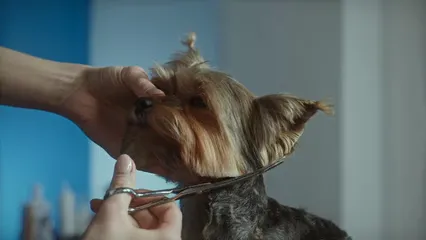
Managing Your Dog’s Anxiety
Nail trimming can be stressful for dogs. It’s important to manage their anxiety to make the process smoother. One effective technique is using calming aids. Pheromone sprays can help soothe your dog during this time. Soothing music can also create a relaxing atmosphere.
Breaks during the trimming session are essential. Allow your dog to take short breaks to ease tension. This helps them feel more comfortable and less overwhelmed.
Creating a calm environment is crucial too. Trim your dog’s nails in a quiet space, free from distractions. Speak softly and reassure them throughout the process.
You might also consider positive reinforcement. Treats and praise can help your dog associate nail trimming with good experiences. This builds a positive connection over time.
Combining these techniques can significantly reduce nail trimming stress. Your dog will likely feel more relaxed and cooperative, making it easier for both of you. By focusing on anxiety management, you can transform nail trimming into a more pleasant routine. And if you’re looking to keep your pup calm, try some dog anxiety vests!

Conclusion
Preparing your dog for nail trimming during winter is crucial. The colder months can make this task more challenging, but regular care is essential for your furry friend’s health. Remember, long nails can lead to discomfort and mobility issues.
By implementing the tips shared in this article, you can create a smoother experience for both you and your dog. With patience and practice, nail trimming can become a routine part of your winter care. Don’t forget to check out grooming gloves to keep your pup looking sharp!
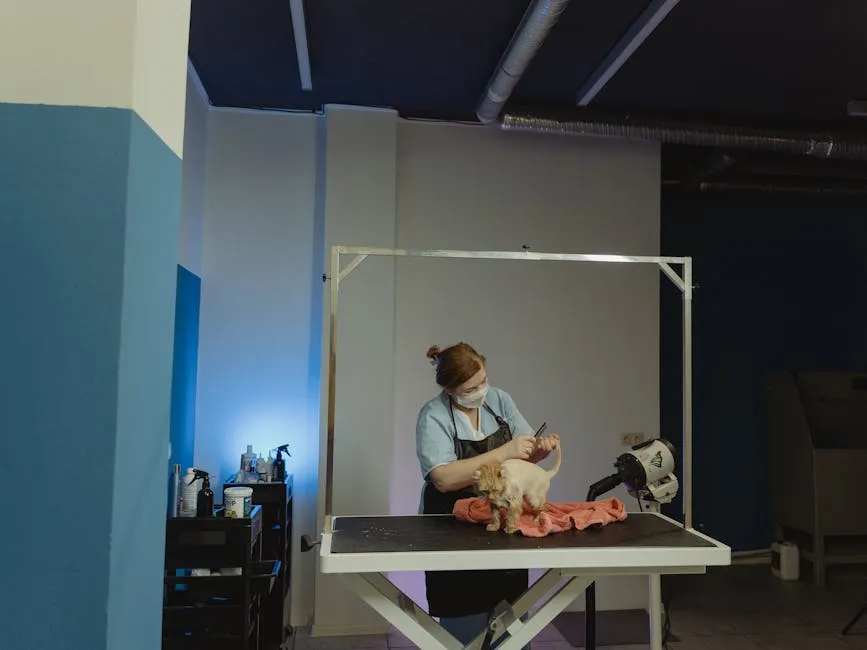
Regular nail care isn’t just about aesthetics; it significantly impacts your dog’s well-being and happiness. Start today and make nail trimming a positive experience! For more information on grooming schedules, check recommended grooming schedules for double-coated dogs throughout the year.
Understanding grooming schedules can enhance your dog’s overall care. Explore recommended grooming schedules here.
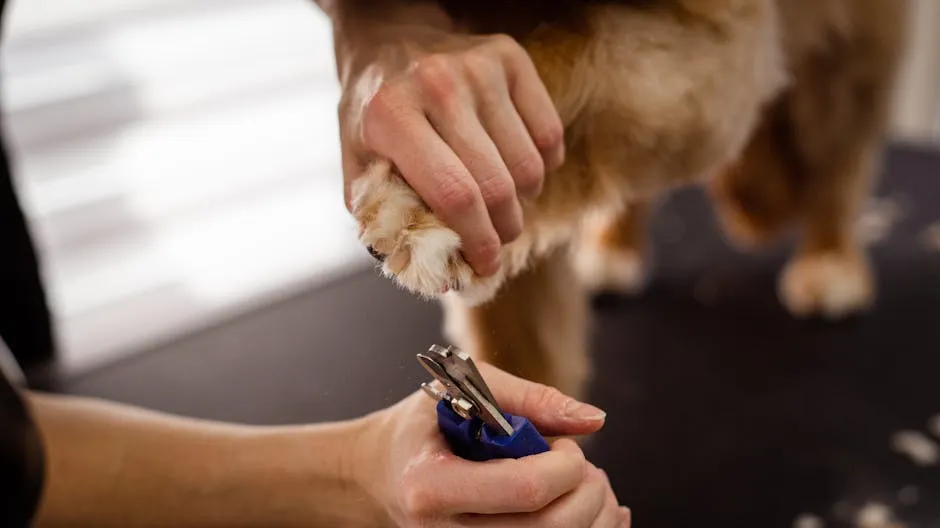
FAQs
How often should I trim my dog’s nails in winter?
The frequency of winter nail trimming varies. Factors like your dog’s activity level and breed play a role. Active dogs may wear down their nails naturally, so they might need less frequent trims. On average, consider checking and trimming your dog’s nails every 3-4 weeks. Keeping up with winter nail trimming helps maintain your dog’s grooming schedule.
What tools are best for trimming dog nails?
Choosing the right tools is key. Good options include dog nail clippers, like guillotine or scissor types. Nail grinders are also effective for a smoother finish. Each tool has its benefits, so select one that suits your comfort level and your dog’s needs. Using quality grooming tools for dogs will make the process easier and safer. Learn more about budget-friendly dog grooming tools for home use.
How can I tell if my dog’s nails are too long?
Look for specific signs indicating long nails. If you hear clicking sounds on hard floors, it’s a clear signal. Additionally, if your dog seems uncomfortable while walking or reluctant to engage in play, their nails may need trimming. Regular checks and understanding the signs of long nails are essential for effective dog nail care.
What if my dog is afraid of nail trimming?
Is your dog anxious about nail trimming? You’re not alone! Many dogs feel uneasy when it comes to this grooming task. Fortunately, there are effective methods to ease their fear and anxiety. Start by creating a calm environment. Choose a quiet space for nail trimming. You can play soothing music to help your dog relax. Consider using calming aids like pheromone sprays. These can provide comfort during the process. Positive reinforcement is key! Use treats to reward your dog for calm behavior. Introduce nail clippers slowly. Allow your dog to sniff and explore them first. This helps build a positive association. You can also break the process into smaller steps. Start with just one paw, and take breaks as needed. If your dog seems overwhelmed, pause and try again later. Patience is crucial. Over time, your dog will likely learn to accept nail trimming without fear.
Is it okay to trim my dog’s nails indoors during winter?
Absolutely! Indoor grooming is a practical choice during cold winter months. It offers several benefits for both you and your dog. First, trimming indoors keeps your dog warm and comfortable. Cold temperatures can make outdoor grooming challenging. You don’t want your dog to feel chilly while getting their nails done. Set up a cozy space in your home. Use a non-slip mat to ensure your dog feels secure. Good lighting is essential too. This helps you see clearly while trimming their nails. Indoor grooming also allows for better control over the environment. You can minimize distractions and create a calm atmosphere. This can be especially helpful for anxious dogs. Remember to have all your tools ready before you start. Keep treats on hand to reward your dog throughout the process. Indoor nail trimming can become a smooth, stress-free routine.
Please let us know what you think about our content by leaving a comment down below!
Thank you for reading till here 🙂
All images from Pexels

